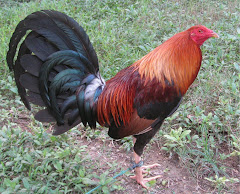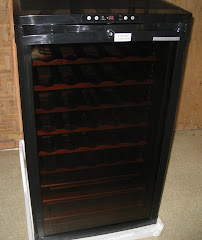Sunday, October 26, 2008
The glycemic index in sport
By Ellen Coleman, RD, MA, MPH
The glycemic index (GI) provides a way to rank carbohydrate-rich foods according to the blood glucose response following their intake. The GI is calculated by measuring the incremental area under the blood glucose curve following ingestion of a test food (glucose or white bread) providing 50 g of carbohydrate, compared with the area under the blood glucose curve following an equal carbohydrate intake from the reference food. All tests are conducted after an overnight fast (1).
The GI reflects the rate of digestion and absorption of a carbohydrate-rich food. Thus, the GI is influenced by: the food form (including particle size, presence of intact grains, texture, and viscosity); the degree of food processing and cooking; the presence of fructose or lactose (both have a low GI); the ratio of amylopectin and amylose in starch (amylose has a slower rate of digestion); starch-protein or starch-fat interactions; and the presence of antinutrients such as phytates and lectins (1).
Generally, foods are divided into those that have a high GI (glucose, bread, potatoes, breakfast cereal, sports drinks), a moderate GI (sucrose, soft drinks, oats, tropical fruits such as bananas and mangos), or a low GI (fructose, milk, yogurt, lentils, pasta, cold climate fruits such as apples and oranges). Tables of the GI of a large number of foods have been published internationally (2).
Some practitioners have recommended manipulating the GI of foods and meals to enhance carbohydrate availability and improve athletic performance. For example, low GI foods are often recommended before exercise to promote sustained carbohydrate availability. Moderate to high GI foods are recommended during exercise to promote carbohydrate oxidation and following exercise to promote glycogen repletion.
Thomas and colleagues initially raised interest in the use of GI in sport by manipulating the glycemic response to pre-exercise meals (3). They reported that the consumption of 1 g of carbohydrate/kg from a low GI food (lentils) one hour prior to cycling at 67% of VO2max increased endurance compared to an equal amount of carbohydrate from a high GI food (potatoes). The low GI lentils promoted lower postprandial blood glucose and insulin responses and more stable blood glucose levels during exercise compared with the high GI potatoes (3).
In a second study, Thomas and associates provided 1 g of carbohydrate/kg from two low GI meals and two high GI meals (powdered foods and breakfast cereals) one hour prior to cycling to exhaustion at 70% of VO2max (4). The low GI meals were associated with higher blood glucose levels after 90 minutes of exercise compared to the high GI meals and appeared to provide a sustained source of carbohydrate throughout exercise. However, there were no differences in time to exhaustion between the low GI meals and high GI meals and no correlation between exercise time and meal GI.
Sparks and colleagues provided 1 g of carbohydrate/kg from a low GI food (lentils) and a high GI food (potatoes) 45 minutes prior to exercise (5). The subjects cycled for 50 minutes at 67% of VO2max and then underwent a 15 minute performance trial. The high GI meal caused an increase in blood glucose before exercise and a decline in blood glucose at the onset of exercise compared to the low GI meal. Despite these alterations in exercise metabolism, there were no differences in work output during the performance trial.
DeMarco and associates provided 1.5 g of carbohydrate/kg from a low GI food and a high GI food 30 minutes prior to exercise (6). The subjects cycled for two hours at 70% of VO2max and then rode to exhaustion at 100% of VO2max. Plasma insulin levels were lower for the low GI meal through 20 minutes of cycling and the exercise time to exhaustion was longer for the low GI meal compared to the high GI meal. The low GI meal also maintained higher blood glucose levels at the end of two hours of exercise, which may have improved subsequent maximal effort.
Sherman et al (7) compared the ingestion of 1.1 g/kg and 2.2 g/kg of a high glycemic carbohydrate beverage 1 hour prior to exercise. The subjects cycled at 70% of VO2max for 90 minutes and then underwent a performance trial. Serum insulin was initially elevated at the start of and during exercise and blood glucose initially decreased. However, time-trial performance was significantly increased 12.5% by the carbohydrate feedings, presumably via increased carbohydrate oxidation.
There is insufficient evidence to support the recommendation that all athletes consume low GI index foods before exercise. The hypoglycemia and hyperinsulinemia following pre-exercise carbohydrate feedings are transient and will not harm performance unless the athlete reacts negatively to high glycemic foods. A low glycemic index pre-exercise meal may be beneficial for athletes when consuming carbohydrate during exercise is not practical or possible. Athletes should evaluate their responses to high-carbohydrate foods with both low and high glycemic indexes in training to find what works the best (1).
Athletes who react negatively to high glycemic foods can choose from several strategies: consume a low glycemic index carbohydrate before exercise; take in carbohydrate a few minutes before exercise; or wait until exercising to consume carbohydrate. The exercise-induced rise in the hormones epinephrine, norepinephrine, and growth hormone inhibit the release of insulin and thus counter insulin?s effect in lowering blood glucose.
Consuming carbohydrate during prolonged exercise enhances carbohydrate availability and improves performance. Although it makes sense that athletes should consume carbohydrate sources that are rapidly digested and absorbed to promote carbohydrate oxidation, the glycemic response to carbohydrate feedings during exercise has not been systematically studied. However, most athletes choose carbohydrate-rich foods (sports bars and gels) and fluids (sports drinks) that would be classified as having a moderate to high GI (1).
Consuming adequate carbohydrate following exercise helps to replenish glycogen stores between daily exercise sessions. Burke and associates investigated the effect of GI on muscle glycogen repletion following two hours of cycling at 75% of V02max (7). The subjects consumed 10 g of carbohydrate/kg/day from high GI or a low GI meals. The high GI diet promoted greater muscle glycogen storage (106 mmol/kg) than the low GI diet (71.5 mmol/kg) after 24 hours.
The most rapid increase in muscle glycogen during the first 24 hours of recovery may be achieved by consuming foods with a high GI. However, Burke and colleagues note that the total amount of carbohydrate consumed is the most important consideration for glycogen repletion. They recommend an intake of 7 to 10 g of carbohydrate per kg for maximum daily glycogen restoration (1).
The GI concept has limitations. The GI is based on equal grams of carbohydrate (50 g), not average serving sizes. The numbers that are available are also largely based on tests using single foods. The blood glucose response to high GI foods may be blunted when combined with low GI foods in the meal. However, the GI can be applied to mixed meals by taking a weighted mean of the GI of the carbohydrate-rich foods that make up the meal (1).
The GI may be useful in sport by helping to fine tune food choices. However, the GI should not be used exclusively to provide guidelines for carbohydrate and food intake before, during, and after exercise. There are other features of foods that are important to the athlete, such as the food?s nutritional content and the practical issues of palatability, portability, cost, gastric comfort, and ease of preparation. Since food choices are specific to the individual athlete and exercise situation, athletes should choose foods according to their nutritional goals (1).
References
1. Burke LM, Collier GR, Hargreaves M. The glycemic index ? a new tool in sport nutrition? Int J Sport Nutr. 1998; 8:401-415.
2. Foster-Powell K, Brand Miller J. International tables of glycemic index. Am J Clin Nutr. 1995; 62(Suppl): S871-S893.
3. Thomas, DE, Brotherhood JR, Brand JC. Carbohydrate feeding before exercise: effect of glycemic index. Int J Sport Med. 1991; 12:180-186.
4. Thomas DE, Brotherhood JR, Brand Miller, J. Plasma glucose levels after prolonged strenuous exercise correlate inversely with glycemic response to food consumed before exercise. Int J Sport Nutr. 1994; 4:361-373.
5. Sparks MJ, Selig SS, Febbraio MA. Pre-exercise carbohydrate ingestion: effect of the glycemic index on endurance exercise performance. Med Sci Sport Exerc. 1998; 30:844-849.
6. DeMarco HM, Sucher KP, Cisar CJ, GE Butterfield. Pre-exercise carbohydrate meals: application of glycemic index. Med Sci Sport Exerc. 1999; 31:164-170.
7. Sherman WM, Peden MC, Wright DA. Carbohydrate feedings 1 hour before exercise improves cycling performance. Am J Clin Nutr. 1991;54:866-870.
8. Burke LM, Collier GR, Hargreaves M. Muscle glycogen storage after prolonged exercsie: effect of glycemic index. J. Appl. Physiol. 1993; 75:1019-1023.
Miles of smiles,
Ellen Coleman, RD, MA, MPH
Tags: ellen coleman, glycemic index, nutrition
Welcome. To read the articles, please click post link or month, then subsequent post link.
Ponkan broodcock

One of the ponkan broodcocks being readied by RB Sugbo for the incoming breeding season. RB Sugbo is among the gamefowl farms very much involved in the Masang Nagmamanok (MANA) Inc. nationwide gamefowl dispersal program.
Another ponkan

Another ponkan broodcock in the trio pen.
Mana: Dami at Pagkakaisa
Walang duda napakalaki na ng pinagunlad ng sabong mula sa paging libangan tuwing araw ng Linggo, ito ngayon ay isa nang napakatanyag na isport, malaking industriya at kaakitakit na mapagkakitaan.
Napakarami nang nagpapalahi ng manok panabong. Nagsilabasan ang mga babasahin at programa sa telebisyon ukol sa sabong.
Sa bawat nagpapalahi, ilan ang tagapagalaga ng kanyang manok? Sa bawat may-ari ng sabungan, ilan ang naghahanapbuhay sa sabungan niya? Sa bawat kasali sa derby, ilan ang nagbabayad sa pinto upang manood? Sa bawat malaking sabungero, ilan ang mayroon lang iilang pirasong tinale sa kanilang bakuran? Dapat lang, at napapanahon na siguro, na ang masang sabungero ay mapagtuonan ng pansin, mabigyan ng kinatawan, at, marinig ang boses sa isport at industriya ng sabong.
Ito ang nais abutin ng MANA (Masang Nagmamanok), isang pambansang kilusan at samahan ng mga masang sabungero. Ang mga layunin ng MANA ay ang sumusunod:
1. Ang pangalagaan ang kapakanan ng mga maliit na sabungero, partikular na, ang mga naghahanapbuhay sa sabungan. Inaasam na sa darating na panahon, ang mga handlers, mananari, casador, kristos, sentensiyador, farm hands ay magkakaroon ng mga benepisyo tulad ng insurance, pension at iba pa.
2. Ang mapatingkad ang kaalaman ng ordinaryong sabungero sa pagmamanok. At, sila’y mabigyan ng pagkakataon na magkaroon ng angkop na materyales sa pagpapalahi at paglalaban.
3. Ang ipaglaban ang sabong sa gitna ng banta na itoy gawing labag sa batas tulad ng nangyari kamakailan lang sa Estados Unidos, at ipreserba ito bilang isport, hanapbuhay, industriya at bahagi ng ating kultura at tunay na mana.
4. Ang magtulungan at makipagtulungan sa iba pang haligi ng industriya sa ikabubuti ng sabong at ikauunlad ng lahat na mga sabungero.
Inaasahan na matupad ng MANA ang nasabing mga layunin pamamagitan ng pagpakita ng dami at pagkakaisa.
Ang pagkatatag ng MANA ay bunsod ng mungkahi ni kamanang Boying
Ang Llamado Tayo ay tumatalakay sa ibatibang aspeto sa pagmamanok at binabasa ng napakarami arawaraw, kaya di nagtagal marami ang sumapi sa MANA.
Kasunod nito, ang MANA ay nakapagpaseminar sa ibatibang lugar at rehiyon ng Pilipinas, sa tulong ng mga kumpaniya tulad ng Excellence Poultry & Livestock Specialist, Bmeg-Derby Ace, Sagupaan, Secret Weapon, at Thunderbird.






